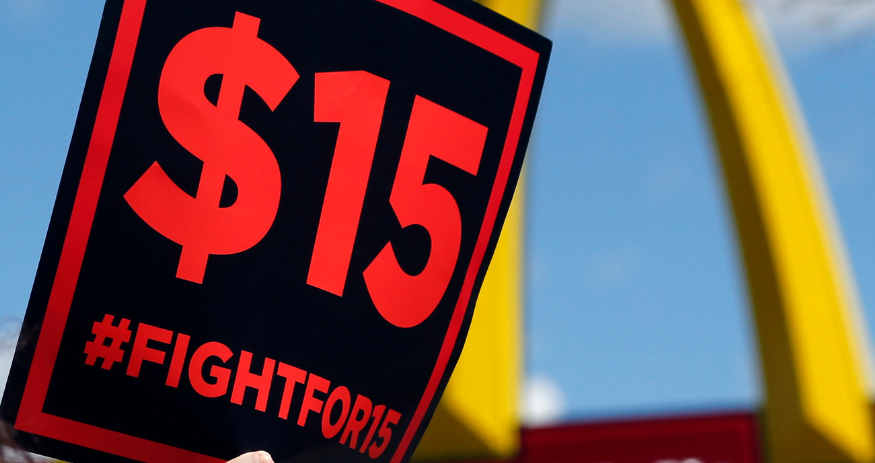Arizona minimum wage to increase 35 cents to $14.70
Howard Fischer, Capitol Media Services//September 11, 2024//[read_meter]
Arizona minimum wage to increase 35 cents to $14.70
Howard Fischer, Capitol Media Services//September 11, 2024//[read_meter]
What would you buy if you had an extra $14 a week?
A couple of meals at a fast food restaurant? An extra four gallons of gas? Or, perhaps, two pounds of ground beef?
Those are among the choices that will be facing Arizonans at or near the bottom of the pay scale when the state’s minimum wage rises another 35 cents in January, to $14.70 an hour.
The reason for the increase is that Arizona voters have twice approved creating a state minimum wage separate from the federal figure of $7.25, a number that hasn’t been raised since 1991. More to the point, those two initiatives require annual increases pegged to the annual inflation figures in the Consumer Price Index.
The new numbers, released Sept. 11 by the Bureau of Labor Statistics, peg year-over-year inflation at 2.5%. Computing that into the current $14.35 comes out to nearly 35.9 cents.
But the law also requires the Industrial Commission of Arizona, which actually makes the adjustment, to round to the nearest nickel, resulting in the final figure of $14.70 an hour. A formal announcement is expected later this month.
Workers in some communities will actually do better.
Tucsonans voted three years ago to enact their own minimum wage in multiple steps.
That is set to go to $15 an hour in 2025, with annual inflation adjustments after that And using that new $15 base, that means that, from now forward, wages will be higher in Tucson than the rest of the state.
In Flagstaff, the only other city with a local wage ordinance, the minimum already is $17.40 an hour. And with guaranteed inflation adjustments, workers there will be earning at least $17.85 in January.
In fact, it always will be higher than the state wage no matter what. The Flagstaff ordinance says the minimum wage there has to be at least $2 an hour higher than the state mandate.
The question of how many people actually are working below that minimum right now is less than clear, as inflation and a tight labor market has forced many employers to offer more than that just to get applicants in the door.
The most recent figures from the state Office of Economic Security – from 2023 – show starting wages for fast food and counter workers at $13.94 an hour, with dishwashers at $14.10. Ushers, lobby attendants and ticket takers were starting in the $13.86 range, as were amusement and recreation attendants.
And pay for hazardous materials removal workers starts at $13.85.
But what normally happens is that an increase at the bottom forces up wages throughout the pay scale. So if that hamburger chain suddenly has to pay 35 cents more an hour for new workers, all the other, more experienced employees will also want a bump.
Gov. Katie Hobbs, making an unrelated economic development announcement Sept. 11, declined to say what she believes is an appropriate minimum wage.
“Arizonans have been struggling with rising costs,” she said. “An appropriate wage is a wage that allows families to have a quality of life without working two and three jobs to keep food on the table. I don’t know what that is.”
But Hobbs did have some thoughts when asked whether her family could survive on $14.70 an hour.
“I think most families living on minimum wage would tell you the answer to that is no, ” she said.
The new numbers come against the backdrop of the Arizona Restaurant Association financing a ballot measure to decrease what it has to pay its own tipped workers.
Current law gives the restaurants a $3-an-hour credit assuming the employees make the minimum once tips are counted in. Using the new minimum wage figures, that makes restaurants responsible for just $11.70 in January.
But if Proposition 138 is approved, it would increase that credit to 25% of the minimum wage, or just $11.02 an hour paid by the employers.
The restaurants argue that no worker would actually lose money. That’s because the new credit would be available to employers only if the worker’s earnings, with tips, total at least $2 over the minimum – or $16.70 as of Jan. 1.
And restaurants say that lowering their own out-of-pocket costs actually helps tipped workers by allowing restaurants to keep more of them employed.
Foes argue, however, there’s no reason to make the employees even more dependent on tips.
The reason wages are going up only 35 cents an hour is because that 2.5% inflation figure is actually the smallest 12-month increase since February 2021. Last year, the annual increase was 3.7% which drove up the minimum by 50 cents.
Breaking down that 2.5% figure finds a mixed bag.
On one side, the numbers for the cost of housing are up 5.2%. And motor vehicle insurance is up 16.5%.
But the cost of food at home rose only 0.9% – though not uniformly. The cost of meat, poultry, fish and eggs is up 3.2% in the past year, with just a 0.4% increase in other groceries, including dairy and related products, and a 0.2% drop in the cost of fruit and vegetables.
And BLS reports that energy costs are down 4% year-over-year, including a 10.3% drop in gasoline prices. That compares with just a 3.3% decrease from the same period a year earlier and a big swing from the 25.6% increase two years earlier.


















